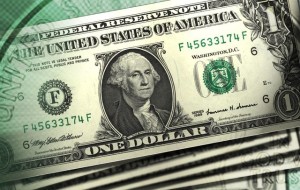By: Sean Curry
As the world watches the annihilated streets of the Gaza Strip, the war-torn borders of Ukraine and Russia, the inhumane massacre of hundreds of Yazidis in Iraq, and the tragic Ebola outbreak in West Africa, the socio-economic issues and conditions of the US are still extremely important and still deserve more attention than they are getting. Many of the world’s conflicts erupt from the varying conditions and the power structures designed and implemented to further perpetuate them. The base economic conditions of a society, according to Marx and Engels, ultimately influence and directly shape the “superstructure” of a society, which consists of its various traits, cultural beliefs, and communal norms. So, in theory, societies with overall better economic conditions, such as high wages, generous amount of vacation days, strong unions, minimized work hours, and collective ownership of both the means and the forces of production, will experience, overall, better social and political conditions. The first part of this series will tackle the most popular issue currently being discussed at the table across the US: the minimum wage.
At a time when the issue of income inequality has become so prominent, it is surprising that the plight of millions of workers throughout the country has not yet been addressed, namely the need to raise the minimum wage. Today, we live in the land of the absurd: wage inequality has been increasing dramatically over the past few decades and, on average, Wall Street executives are being paid roughly three hundred to one thousand times that of the salary of someone working the minimum wage. In a society where one person is allowed to earn such an absurd amount of money, it is absolutely mind-boggling that others are expected to raise their families on so little. A higher wage would not only give people more purchasing power, but it would allow people to only require a single job, instead of multiple, and it would increase profits for businesses.
The argument for the raising of the minimum wage is essentially an enormously long and multi-faceted rebuttal that simultaneously dismisses and proves nearly all claims against raising minimum wage to be either false, overly exaggerated or both. The end result is the implementation of a living wage for all workers. A living wage has an extraordinary ripple effect across the economic, political, and social landscapes. It allows people to focus on what makes brings them happiness as opposed to toiling away their lives in hopes of saving up enough money to retire. It eliminates the shackle like hold that low wages have on people, giving them just enough money to survive, so that they are almost guaranteed to return to work. The carrot at the end of the stick, that we in the US refer to as the “American Dream”, will be closer and more easily attainable, reducing the monstrous gap of wealth inequality; easing the load of anxiety from external pressure and social expectations that one experiences in this post-modern society, thus allowing them to enjoy all aspects of life to the fullest potential. This circles back around to the idea that a societies overall economic conditions have a direct correlation to the status of both the social and political conditions.
The opposition most commonly resorts to using the straw man fallacy in order to misrepresent the argument. The three main arguments will be presented and subsequently followed by a rebuttal and one real world example. At the end will be a logical breakdown of what occurs when there is an increase in the minimum wage.
“Raising the minimum wage will make it more expensive to hire workers and will cause people to lose their current jobs.” This is both true and false, which is why I decided to tackle this first this first. While in any economic theory/discipline/field raising the wages, the cost of labor, does increase expenses and decrease profits, it only does so at a minimal cost for a minimal period of time. The extra pay has a compounding positive impact on the morale of an employee, increasing their productivity and reducing turnover rate, which leads to reduced labor costs and increased profits. Another factor in the equation that almost everyone seems to leave out is that once people are receiving enough pay from a job, they won’t need to get a second or third job. This opens up positions and creates opportunities for those that are unemployed to get a job and start contributing their salary towards the economy through taxes and the purchasing of goods and services. Lastly, the Associated Press back’s up these claims, stating “In the 13 states that boosted their minimums at the beginning of the year, the number of jobs grew an average of 0.85 percent from January through June. The average for the other 37 states was 0.61 percent.” While opponents will undoubtedly continue to circulate this myth, the facts just don’t stack up in their favor.
“All products and services will increase in price in order to compensate for increased labor costs” Although this tends to be true, it is not necessarily always true. I say this because there are other cost cutting techniques in which an employer can take instead of passing it on to the consumer, but it is the route most travelled. The real question that remains is ‘How much will it be raised?’ The answer, according to journalist Jeannette Wicks-Lim of Back to Full Employment, is that a 10-percent increase in wages would amount to an increase anywhere between one cent and fifteen cents. One study, conducted by the UC Berkeley Center for Labor Research and Education, specifically targeted Walmart and came to the conclusion that if they increased their minimum wage to $12 it would result in an increase of roughly forty-six cents per shopping trip. But there still remains the fact that many corporations are racking in billions in profits, receiving an increase in profits from 2008-2012, and an annual increase of employee pay of 10% would have only dented their profits 2.8%, reports an article from the Center for American Progress. This still leaves an immense amount of profits for the CEO’s, shareholders, and board members to continue to receive their outrageously handsome six and seven-figure bonuses and annual incomes.
“Small local businesses won’t be able to afford the higher wage and be forced to close or raise prices higher” A huge movement in the business world is the ‘Business for a fair minimum wage’ which includes over 1,000 small, and big, businesses and entrepreneurs. According to their studies and polls, 67% of small businesses support the increase, while 82% said they already paid above the minimum. Adding to this is the fact that every business is affected by the increases. This equates to businesses already paying above minimum experiencing negligible effects on their prices, while those that do pay the minimum wage will be forced to raise prices or, in order to stay competitive, have the prices remain the same.
Now comes the breakdown which evolves into circular reasoning that self-perpetuates its own growth and existence:
Increased wages =
- Surplus capital for people to spend = increase in sales/demand = requirement for an increase in production to meet the increase in demands = hiring more workers to help produce more = #1 again.
- Every business must raise prices, to compensate for increased labor costs, or withhold the rise of prices in order to remain competitive =little to no increase in prices = increase in sales = requirement for an increase in production = hiring more workers = #1
- No longer requiring multiple jobs = open positions for currently unemployed = #1
- No longer requiring government assistance = lower taxes = #1
Additionally, more than 600 economists, seven of them Nobel Prize winners in economics, have signed onto a letter in support of raising the minimum wage. A 2012 study by the non-partisan think tank Demos on the effect of raising the minimum wage on retailers found that U.S. gross domestic product could actually receive a boost in sales, that thousands of jobs would be created, and that retailers would gain a huge amount of additional revenue. For low-income families as a group, the Congressional Budget Office finds that the gains greatly outweigh the costs. In particular, a minimum wage hike to $10.10 would raise many average family incomes below the poverty line while simultaneously reducing the number of people living in poverty by nearly one million. The CBO also estimates that a minimum wage boost to $10.10 would raise average income for families up to three times the poverty line and they would not start shrinking income until six times the poverty line.
In the end, this argument can be perfectly summed up and concluded in the following statement:
Even if everyone worked hard and went to college, someone would still need to make our pizzas, stock our shelves, drive our cabs, provide janitorial duties for all businesses and institutions, make our burgers, and take our orders. We cannot continue looking down on them and assuming they deserve to live in poverty.
Image courtesy of Death and Taxes Mag

